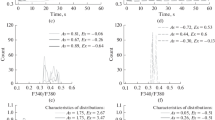Abstract
Human neutrophilic granulocytes (PMN) suspended in protein containing salt solution or adherent on protein coated nylon fibers were tested for the production of H2O2 and O −2 in response to various PMN stimulants. Upon stimulation with the chemotactic factors formyl-methionyl-leucyl-phenylalanine, C5a and platelet activating factor, the non-chemotactic ionophore A23187, and the chemotaxis inhibitors tumor necrosis factor (TNFα) and lymphotoxin (TNF β ) adherent PMN produced considerably more reactive oxygen metabolites than suspended cells. The relative amounts of the two metabolites varied with the stimulus and its concentration, TNFα and TNF β favoring H2O2 production, C5a eliciting more O −2 than H2O2 and the other active stimulants being in between. Leukotriene B4 and a novel monocytederived chemotaxin were inactive in releasing either oxygen derivative from adherent or suspended PMN. The data indicate that attachment of PMN to endothelial cells or to connective tissue substances can strongly enhance its ability to respond to a given stimulus with the production of reactive oxygen metabolites. The findings may in part explain the “priming” phenomenon since many PMN-priming mediators increase the cells' adherence.
Similar content being viewed by others
References
J. C. Fantone and P. A. Ward,Role of oxygen-derived free radicals and metabolites in leukocyte-dependent inflammatory reactions. Am. J. Pathol.107, 398–418 (1982).
E. Kownatzki, A. Kapp and S. Uhrich,Modulation of human neutrophilic granulocyte functions by recombinant human tumor necrosis factor and recombinant human lymphotoxin. Promotion of adherence, inhibition of chemotactic migration and superoxide anion release from adherent cells. Clin. exp. Immunol. in press.
E. Kownatzki and S. Uhrich,Differential effects of nylon fibre adherence on the production of superoxide anion by human polymorphonuclear neutrophilic granulocytes stimulated with chemoattractants, ionophor A23187 and phorbol myristate acetate. Clin. exp. Immunol.69, 212–220 (1987).
E. Kownatzki, A. Kapp and S. Uhrich,Novel neutrophil chemotactic factor derived from human peripheral blood mononuclear leucocytes. Clin. exp. Immunol.64, 214–222 (1986).
Author information
Authors and Affiliations
Rights and permissions
About this article
Cite this article
Neumann, M., Kownatzki, E. The effect of adherence on the generation of reactive oxygen species by human neutrophilic granulocytes. Agents and Actions 26, 183–185 (1989). https://doi.org/10.1007/BF02126602
Issue Date:
DOI: https://doi.org/10.1007/BF02126602



